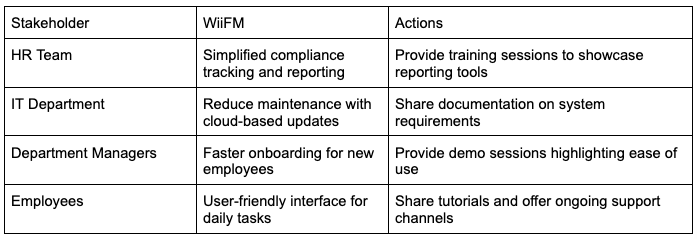
Change is hard. Managing change is even harder. Executing effective change management? That can feel nearly impossible. We hear this all the time from teams, whether they're making small adjustments to their learning solution or overhauling their entire learning ecosystem.
It's easy to focus on the logistics—tools, timelines, and processes—but without a strong foundation for behavior change, even the best-laid plans can fall apart.
The elephant in the room is this: No matter how well-planned, well-intentioned, or strategically sound a change may be, it won't take hold if employees aren't emotionally invested.
People don't resist change because they dislike innovation—they resist because it feels disruptive, overwhelming, or misaligned with their needs. That's why psychology—not just process—is the real first step to making change stick. Understanding how people react to change and what drives their behavior is what determines whether transformation succeeds or stalls.
Haidt's Elephant and Rider Analogy: Understanding the Psychological Framework for Change
Psychologist Jonathan Haidt offers a simple but powerful analogy for understanding why people struggle with change. Picture a Rider sitting on top of an Elephant, traveling down a path.
- The Rider represents the rational, analytical side of decision-making—the part that understands why change is needed.
- The Elephant represents the emotional, intuitive side—the part that actually drives behavior.
In Haidt's analogy, successful change depends on aligning both logic (the Rider) and emotion (the Elephant). People must not only understand the reasons for change but also feel emotionally invested in it.
For example, when transitioning from a legacy system to a modern learning solution, logic can be engaged by presenting data on improved efficiency, such as faster onboarding times or reduced compliance risks. But data alone isn't enough. Change leaders must inspire employees by connecting the transformation to a higher purpose, fostering a sense of ownership, and building a community around the change.
With the right learning ecosystem, organizations have the power to improve people's careers and lives. A modern learning solution supports skills-based strategies, making career mobility and talent identification more seamless. It also accelerates professional growth through personal development plans, ensuring employees see a direct benefit to their futures. These reasons are far more compelling to people throughout your organization of which successful adoption hinges on. If change can unlock better learning experiences, stronger career opportunities, and a more engaged workforce, why wouldn't an organization embrace it?
Why Emotion Drives Action: Lessons from Psychology
Change efforts that rely only on logic often fail because humans aren't purely rational decision-makers. Behavioral psychology research confirms that emotional engagement is critical to action.
- The Framing Effect (Tversky & Kahneman, 1981) – People react differently to the same information depending on how it's framed. Leaders who frame the change as an opportunity for career growth rather than just an operational update can increase buy-in.
- The Endowment Effect (Kahneman, Knetsch & Thaler, 1991) – People overvalue what they already have, which explains why employees may resist switching to a new system even if it's objectively better. Overcoming this requires demonstrating why the new system is personally valuable to them.
- Emotion & Decision-Making (Damasio, 1994) – Neuroscientist Antonio Damasio found that people struggle to make decisions without emotional input, proving that logical arguments alone aren't enough to inspire action. Change strategy must be linked to how employees feel about their work, careers, and daily learning experience.
By tapping into both logic and emotion, organizations can create a change strategy that not only makes sense but also feels compelling and necessary.
How to Inspire the Elephant: Practical Strategies for Change Leaders
Understanding the Elephant and Rider analogy is a helpful way to frame change management, but theory alone isn't enough. The following tools and frameworks help turn psychology into actionable steps, ensuring that change isn't just a directive but a movement people believe in.
Here's how to make "riding the Elephant" a tangible, achievable process.
- Develop a Compelling Case for Change
One of the most effective ways to align logic and emotion is by creating a "burning platform"—a clear, undeniable reason for change. The term comes from a real-life crisis: a worker on a burning oil platform had to jump into freezing waters to survive. The pain of staying was greater than the pain of jumping. In change management, this metaphor highlights the need to create urgency. People don't change unless they feel they have to.
Consider these questions when framing your case for change:
- What market forces are driving the need for transformation?
- What inefficiencies are holding your organization back?
- What opportunities will you miss if you don't act now?
For example, if your current LMS is outdated and fragmented:
Current state: If we keep using our legacy LMS, compliance tracking will remain manual and error-prone, increasing regulatory risks.
Future state: By modernizing our system, we can automate compliance tracking, improve reporting accuracy, and free up time for more strategic learning initiatives.
Framing change in these terms moves the Elephant by making inaction feel riskier than action.
- Address "What's In It for Me?" (WiiFM) for Every Stakeholder
Employees don't resist change because they dislike innovation—they resist because they don't see how it benefits them personally. That's why one-size-fits-all messaging doesn't work. To gain buy-in, organizations need to communicate the value of change differently for each stakeholder group.
Using the WiiFM ("What's in it for me?") framework, leaders can personalize messaging to ensure each team sees clear, tangible benefits:

- Craft a Vision That Inspires, Not Just Informs
Remember that stories (the Elephant) resonate with people more than facts and figures. Focus on providing clear and tangible examples of business impact that will build excitement and stoke stronger engagement from your stakeholders.
Many organizations introduce LMS upgrades with statements like:
We're upgrading our learning platform to improve efficiency and standardize training.
This is technically accurate, but uninspiring. Instead, connect logic with emotion by focusing on how the change will improve people's daily work, career growth, or overall experience:
By modernizing our enterprise learning platform, we will cultivate a culture where every employee is empowered to grow and contribute to the company's collective success. We will do this by streamlining onboarding training processes, eliminating system fragmentation, systemizing informal learning, and implementing a standardized skills strategy across HR departments. This will improve company attrition rate by 25%, reduce onboarding time by 40%, improve pulse survey by 10%, and reduce administrative cost by 30% annually.
This specificity helps align stakeholders by clearly defining the scope, objectives, and measurable business outcomes, creating a shared understanding of success. By shifting the focus from process to purpose, leaders can drive true engagement and long-term adoption.
Making Change Stick Starts with the Elephant
The success or failure of any major transformation isn't determined by technology, processes, or even strategy—it's determined by people. No matter how well-planned an LMS implementation or learning transformation may be, it will struggle unless employees believe in the change, feel emotionally connected to it, and see its benefits firsthand.
That's why effective change leaders don't just push change from the top down—they inspire it by:
- Creating a compelling case for change that frames inaction as the greater risk.
- Addressing "What's in it for me?" for every stakeholder, ensuring the change feels relevant and beneficial.
- Crafting a vision that connects logic with emotion, turning transformation into an opportunity, not just a process.
When leaders recognize that logic alone doesn't drive action, but emotion does, they can turn resistance into momentum—and ultimately, make change stick.
At Seertech Solutions, we've spent 20+ years helping organizations navigate change in their learning ecosystems. We've seen it all—resistance to new technology, adoption challenges, shifting business needs—and we know that no two transformations are the same.
That's why we don't offer one-size-fits-all solutions. We work with you to develop a strategy that fits your organization, your people, and your goals—then help you execute it. Whether you're implementing a new LMS, refining your learning strategy, or tackling change management, we have the experience and capability to support you at every stage.
Interested in more change management strategies and tools for implementing successful, effective, lasting change? Download our free toolkit.
Recent articles

Designing for Outcomes, Not Platforms: A Smarter Approach to Learning Tech
Written by: Ken Goldwasser, Client Engagement Manager at Seertech The Technology Has Changed – The Message Is the Same Years ago, in the nascent days of “online” learning, Dr. Ralph Wileman, known for his work in visual literacy and instructional media, warned me not to get too attached to any particular training platform. [...]

The Foundations of Learning ROI: How to Align L&D with Business Goals
If you want to prove the return on investment (ROI) of your learning programs, you can’t start with course design. You can’t even start with learning objectives. The first step is far more strategic: align learning to the outcomes the business actually needs. For many organizations, this requires a shift in mindset. Learning can [...]




